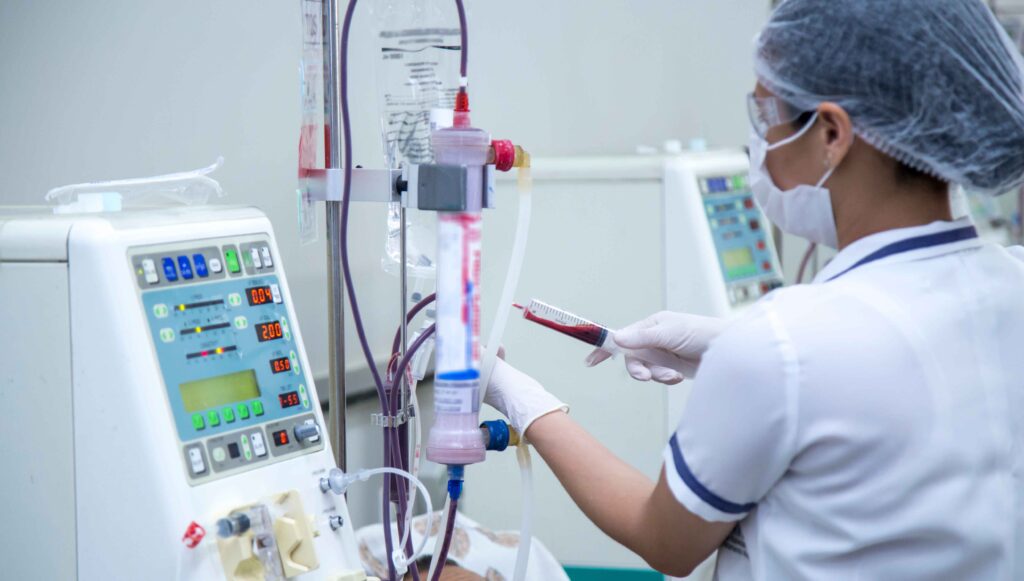If you are looking for How long can a person live on dialysis three times a week? Aashayein is an excellent event for patients undergoing dialysis. There have been two events in Hyderabad till date and patients have enjoyed it immensely. There are lecture sessions by nephrologists, transplant surgeons, vascular surgeons, dieticians and even patients. There’s often some excellent entertainment too.
One of the most important highlights of the event is the fancy lunch arranged according to the dialysis patient diet. Patients normally do not have much of an option to eat when they attend any such gathering.
All of the food is too risky for them to consume. It can be highly frustrating. They get to watch all the nice food and folks stuffing their mouths and they can’t even join in! At Aashayein, the tables are reversed. Patients receive nice food and individuals with normal kidneys have a humble meal.
Earlier observational research has shown that shorter dialysis session duration (DSL) is related to higher mortality. This relationship can be explained by the resulting necessity for more aggressive ultrafiltration or by constraint in solute removal not captured by usual clinical biochemical indices.
Critics have appropriately pointed out that body size is a key predictor of DSL and is also (presumably independently) correlated with mortality, implying that previous studies have been residually confounded by differences in body size.
In particular, smaller body size is linked with higher mortality, and smaller patients are usually dialyzed for shorter durations; therefore, the ensuing bias would support longer DSL. Yet, in the absence of corroborating evidence from randomized controlled trials, such observational data are open to skepticism.
Demographic, clinical, and biochemical source population characteristics are presented in Table The source cohort (eligible participants) included 10,571 patients who had congestive heart failure history and were diabetic at baseline; mean URR was patients were dialyzed through a fistula respectively.
The mean dialytic vintage of this prevalent population was 2.5 years at study onset. In general, the RxDSL groups were comparable with respect to dialytic vintage, pre-dialysis systolic blood pressure, and number of sessions missed during the 30 day exposure period.
Before matching, participants tended to be lighter, older, and female; participants tended to be black and to have diabetes, congestive heart failure, and coronary artery disease.
HD session duration in 19 557 prevalent European in-centre HD patients included in the Dialysis Outcomes and Practice Patterns Study were grouped into Standardized event rates on the first compared with the second HD day following the 2-day break.
with relevant Cox proportional hazards models adjusted for patient and dialysis factors, were created for all-cause mortality, all-cause hospitalization, out-of-hospital death and fluid overload hospitalization.
The Dialysis Outcomes and Practice Patterns Study (DOPPS) was a prospective cohort study of in-centre prevalent HD patients performed on four continents In this analysis.
were enrolled in DOPPS Phases I–IV between Research personnel in participating centers code hospitalization with a standardized coding list created for DOPPS, including diagnosis and procedure codes.
Research teams utilize a variety of sources to ascertain these data such as patient records and discharge summaries. For every follow-up of 4 months, further details were obtained regarding the last HD session such as the date of the last blood tests taken.
Conclusion
Using a regular schedule with minimal gaps between dialysis sessions is required for the survival and health of patients. Gaps are responsible for the toxic buildup and risks of hospitalization or death. How to live longer on dialysis? Regular, well-placed dialysis brings improved fluid status, cardiovascular stability, and overall well-being.
Frequently Asked Questions
Q. How long can someone survive on dialysis?
Many years
Q. Does dialysis cause diarrhea?
Yes, diarrhea in dialysis patients is possible based on the multifactorial nature of the condition, such as uremia-induced immune dysfunction, infection, or medication side effects.
Q. How to stay healthy while on dialysis?
In order to remain healthy when on dialysis, patients need to follow a special diet, restrict fluid, attend all treatments, and be physically active.
Q. Can kidneys start working again after dialysis?
Yes, kidneys might even begin functioning again after dialysis, particularly if the kidney issue is only temporary, such as acute kidney injury (AKI).
Q. How many times a week is dialysis needed?
Three times in week



